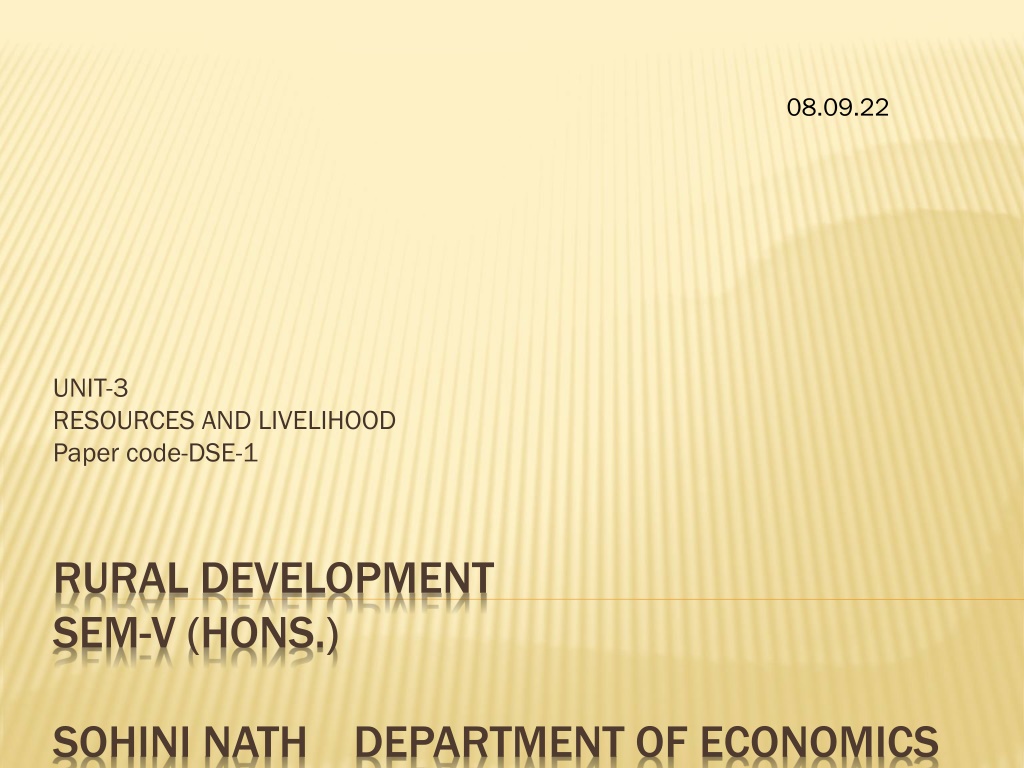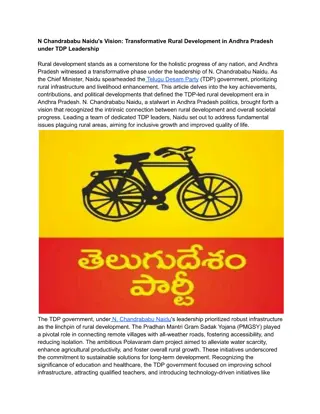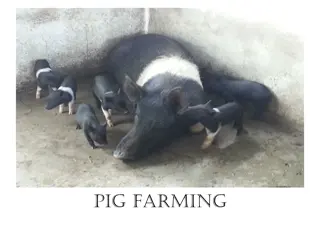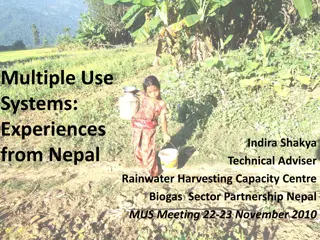Understanding Livelihood and Rural Development
Livelihood encompasses essential activities for everyday life such as securing water, food, and shelter, with agriculture being a significant livelihood source for many. Employment diversification is vital for sustainable livelihoods, and rural diversification includes reliance on forest resources. Enhancing income levels and providing alternate avenues for farmers are key goals of diversification efforts.
Download Presentation

Please find below an Image/Link to download the presentation.
The content on the website is provided AS IS for your information and personal use only. It may not be sold, licensed, or shared on other websites without obtaining consent from the author. Download presentation by click this link. If you encounter any issues during the download, it is possible that the publisher has removed the file from their server.
E N D
Presentation Transcript
08.09.22 UNIT-3 RESOURCES AND LIVELIHOOD Paper code-DSE-1 RURAL DEVELOPMENT SEM-V (HONS.) SOHINI NATH DEPARTMENT OF ECONOMICS
WHAT IS LIVELIHOOD? Livelihood is defined as a set of activities essential to everyday life that are conducted over one s life span. Such activities could include securing water, food ,fodder ,medicine ,shelter, clothing. Livelihood-employment, income, living, subsistence. Farming is one of the world s most important professions.
AGRICULTURE AS LIVELIHOOD Agriculture is the mainstay of livelihoods for the majority of the households. Salaried jobs, skilled non-farm job and remittances are more remunerative livelihood sources. However only a few households adopt these activities due to lack of education, assets, investment, capital and skills. Agriculture is the primary source of livelihood for more than 50% of India s population with around 114 million agricultural workers in the country. According to the Periodic labour force survey (PLFS)2018-19 around 54.6% of rural households are engaged in agriculture & related activities .
EMPLOYMENT DIVERSIFICATION Employment diversification is the shifting of workforce from one sector to another for employment. The proportions of this workforce engaged in different sectors of the economy constitute the structure of employment. Occupational diversification has occurred even among landless households ,such as artisans and scheduled castes who have diversified into various economic activities such as government services and other odd jobs in factories and shops.
NEED FOR DIVERSIFICATION This has two-fold benefits. It can be met by directing workers towards either agriculture-related activities or non-farm activities. Employment in non-farm activities can help in providing alternate avenues of sustainable livelihoods to the farmers and in increasing their income level. Agriculture Diversification refers to either a change in cropping pattern or the farmers opting like poultry farming, animal husbandry etc. This practice allows farmers to expand the production which help generate a higher level of income.
TYPES OF RURAL DIVERSIFICATION Rural people are dependent on forest resources for their livelihoods. For many of them ,not only do the resources provide economic sustenance, but the forest is also a way of life socially and culturally. It meets basic needs like fuel wood, fodder and small timber that are important for them and their livestock. People living in forest environments and practicing hunting, collecting and widen agriculture(shifting cultivation)draw heavily on forest-products, not only for subsistence but also for income from forest products.
FISHERIES AS MEANS OF LIVELIHOOD Fisheries sector in India play a significant role in the economy and provide livelihood to millions of fisher folks. India is the third largest fish producing and second largest aquaculture producing nation in the world. The Blue revolution in India demonstrated importance of fisheries. More than 20 million fisherman in India and fish farmers depend on the fisheries industry for their livelihood. A fisherman in India and aquaculture play a significant role in food production, dietary, security, employment and income. It generates INR 1.75 trillion in gross value added annually for India s economy.
WATERSHED-DEVELOPMENT HERMANN BACHER Watershed is a geo-hydrological unit draining to a common point by a system of drains. Watershed development refers to the conservations ,regeneration and the judicious use of all the natural resources particularly land, water, vegetation, animals and human development within the watershed. The main source of livelihood in the village after the watershed program remain the same(farming and labour).However the community is interested in initiating cottage industries(candles, incense stick etc).
N0N-FARM LIVELIHOOD Rural non-farm livelihoods sector covers all non- agricultural activities: household and non- household, manufacturing, processing, construction, mining and quarrying, transport, marketing and other services varying in size from household own enterprises to bigger group enterprises. NON-FARM RURAL ACTIVITIES Dairy/leather industries/tourism/consultancy/small-scale business/service-sector based industries.
IMPORTANCE OF NON-FARM SECTOR Reducing inequalities: Rural income distributions is much less unequal in areas where a wide network of non-farm revenues of employment exists. As lower strata of rural societies participate much more intensely in non-farm activities, it helps in increasing social mobility. Non-farm enterprises development is an important strategy under National Rural Livelihood Mission (NRLM) towards economic empowerment of women. Members of Self Help Groups (SHGs) are encouraged to start Micro Enterprises using local resources, and community investment fund/ community enterprises fund.
RURAL INDUSTRIALIZATION STRATEGY Rural industrialization aims at all-round development of an area as well as people living in such areas. This can be realized only through systematic adoption of improved technology. There should be harmony among all sectors in rural industrialization.
ADVANTAGES OF INDUSTRIALIZATION It has increased our standard of living and made us more productive. It has also created new jobs and industries and helped raise standard worldwide. Rural industries are non-farm activities that depend on rural resources and are primarily meant for employment generation through effective utilization of locally available resources, human-power and technologies that are native or home grown.























